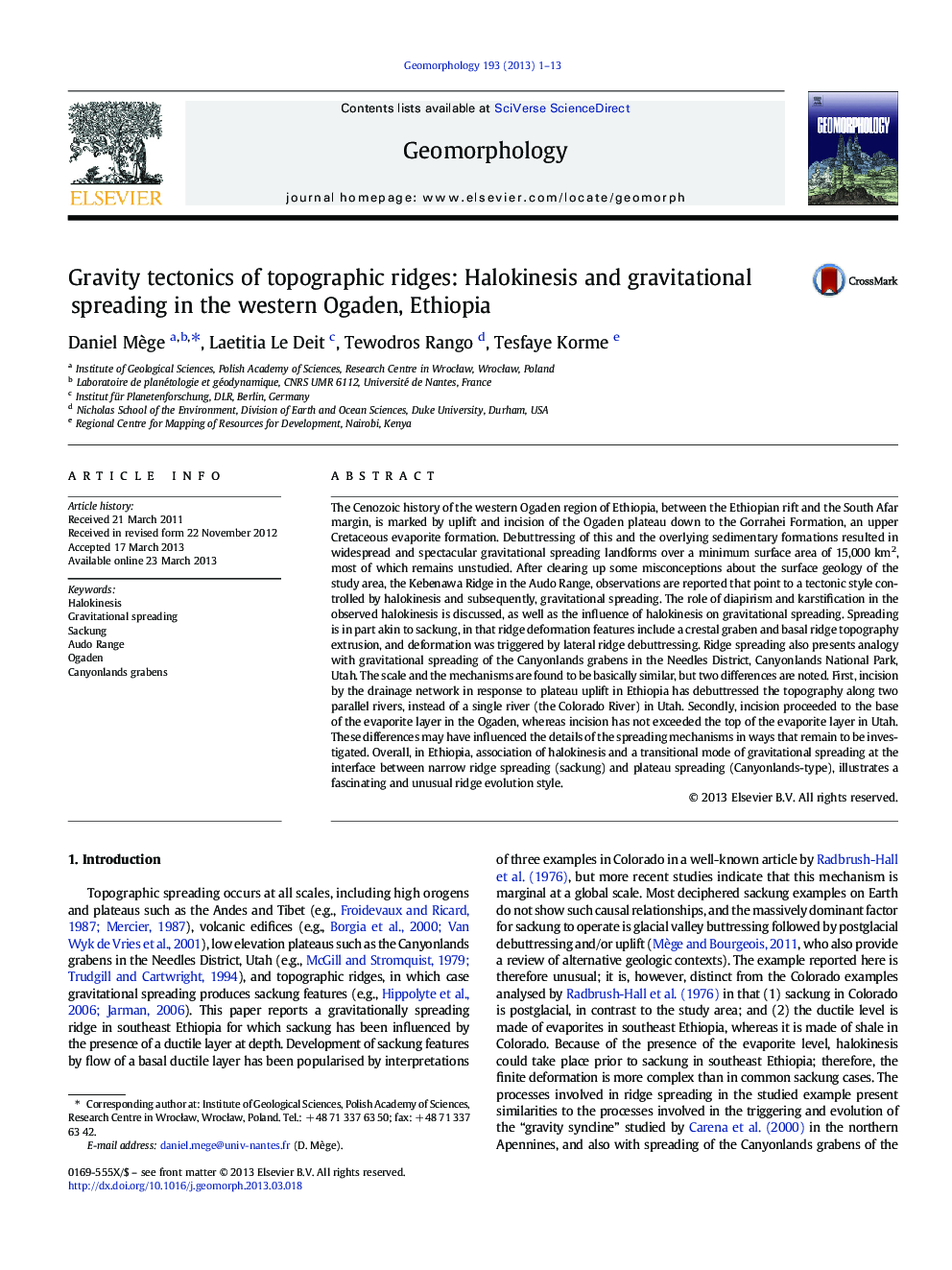| Article ID | Journal | Published Year | Pages | File Type |
|---|---|---|---|---|
| 4684871 | Geomorphology | 2013 | 13 Pages |
•The evolution of the Kebenawa Ridge in southeastern Ethiopia is investigated.•Gravitational spreading occurs after halokinesis and topographic debuttressing.•Its form is intermediate between sackung and spreading of low-elevation plateaus.•Similar processes affected a 15,000 km2 surface area in southeastern Ethiopia.•This overlooked region includes the hugest gravitational spreading domain on Earth.
The Cenozoic history of the western Ogaden region of Ethiopia, between the Ethiopian rift and the South Afar margin, is marked by uplift and incision of the Ogaden plateau down to the Gorrahei Formation, an upper Cretaceous evaporite formation. Debuttressing of this and the overlying sedimentary formations resulted in widespread and spectacular gravitational spreading landforms over a minimum surface area of 15,000 km2, most of which remains unstudied. After clearing up some misconceptions about the surface geology of the study area, the Kebenawa Ridge in the Audo Range, observations are reported that point to a tectonic style controlled by halokinesis and subsequently, gravitational spreading. The role of diapirism and karstification in the observed halokinesis is discussed, as well as the influence of halokinesis on gravitational spreading. Spreading is in part akin to sackung, in that ridge deformation features include a crestal graben and basal ridge topography extrusion, and deformation was triggered by lateral ridge debuttressing. Ridge spreading also presents analogy with gravitational spreading of the Canyonlands grabens in the Needles District, Canyonlands National Park, Utah. The scale and the mechanisms are found to be basically similar, but two differences are noted. First, incision by the drainage network in response to plateau uplift in Ethiopia has debuttressed the topography along two parallel rivers, instead of a single river (the Colorado River) in Utah. Secondly, incision proceeded to the base of the evaporite layer in the Ogaden, whereas incision has not exceeded the top of the evaporite layer in Utah. These differences may have influenced the details of the spreading mechanisms in ways that remain to be investigated. Overall, in Ethiopia, association of halokinesis and a transitional mode of gravitational spreading at the interface between narrow ridge spreading (sackung) and plateau spreading (Canyonlands-type), illustrates a fascinating and unusual ridge evolution style.
